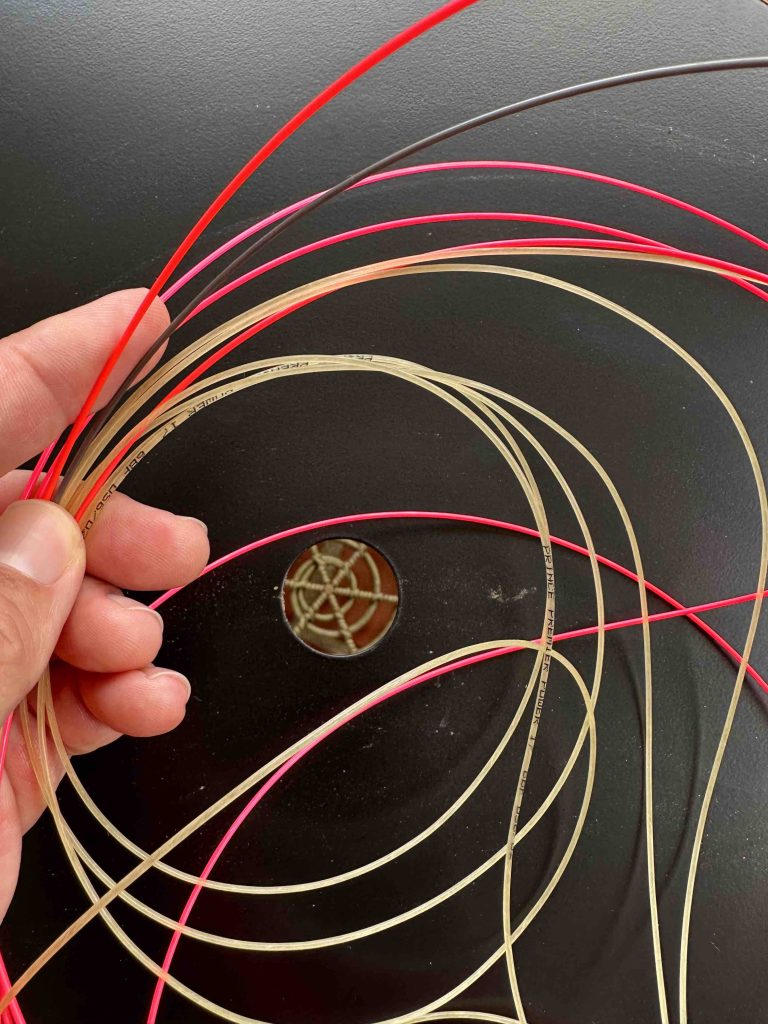What is the difference between a multifilament and a monofilament tennis string? It is one of the most common questions we get.
What is the difference between a multifilament and a monofilament tennis string?
The type of string used can significantly influence a player’s game. Strings can impact the racquet’s power, control, spin, and overall feel. Regarding string composition, two primary categories stand out: multifilament and monofilament. Here’s a detailed breakdown of their differences.
If you want to get more in-depth information in the form of an e-book, course, or consultation. Check out the Tennisnerd store.
If you want to read more about strings, we have created long videos about the topic on our YouTube channel.
If you want to purchase a tennis string, consider doing so from our friends at Tennis Warehouse, Tennis Warehouse Europe and Tennis Only.
Construction
Multifilament:
Composed of numerous (sometimes thousands of) individual microfibers that are intertwined and held together by a protective coating. Often compared to constructing a rope, where many individual fibers are bundled together.
Monofilament:
Typically constructed as a single, solid filament or strand.
Some monofilament strings, particularly those made of polyester, can have a co-polymer structure or may have a multi-core structure but are still considered monofilaments because of the single, predominant filament.
Feel and Comfort
Multifilament:
Generally provides a softer feel, which can be gentler on the arm.
Absorb more shock, making them an excellent choice for players prone to tennis elbow or other arm-related issues.
Monofilament:
Often provide a stiffer, firmer feel, especially when made from materials like polyester.
Can be harder on the arm because they transmit more shock.
Durability
Multifilament:
Tend to be less durable than monofilaments because of their multi-fiber construction.
Players who frequently break strings might find multifilaments less cost-effective in the long run.
Monofilament:
Generally more durable, especially those made of polyester.
Ideal for string breakers or heavy hitters.
Playability and Spin
Multifilament:
Often associated with better playability, providing more power and a comfortable feel.
Does not offer as much spin potential as some monofilament strings due to their smoother surface and lack of snapback.
Monofilament:
Polyester monofilaments are famous for offering excellent spin potential because of their stiffer nature and potential for snapback. Offers a higher degree of control for advanced players.
Tension Maintenance
Multifilament:
Tend to have better tension maintenance than most polyester monofilaments.
Retain their elasticity and playability for longer periods.
Monofilament:
Polyester strings lose tension relatively quickly.
Will need more frequent restringing to maintain optimal performance.
Price
Multifilament:
Often more expensive due to their complex construction.
Monofilament:
Prices can vary, but many are relatively affordable, especially when compared to natural gut strings.
In conclusion, choosing between multifilament and monofilament depends mainly on a player’s preferences, playing style, and physical considerations (like arm comfort). Some players might even opt for a hybrid stringing setup, combining both types to get the best of both worlds.















